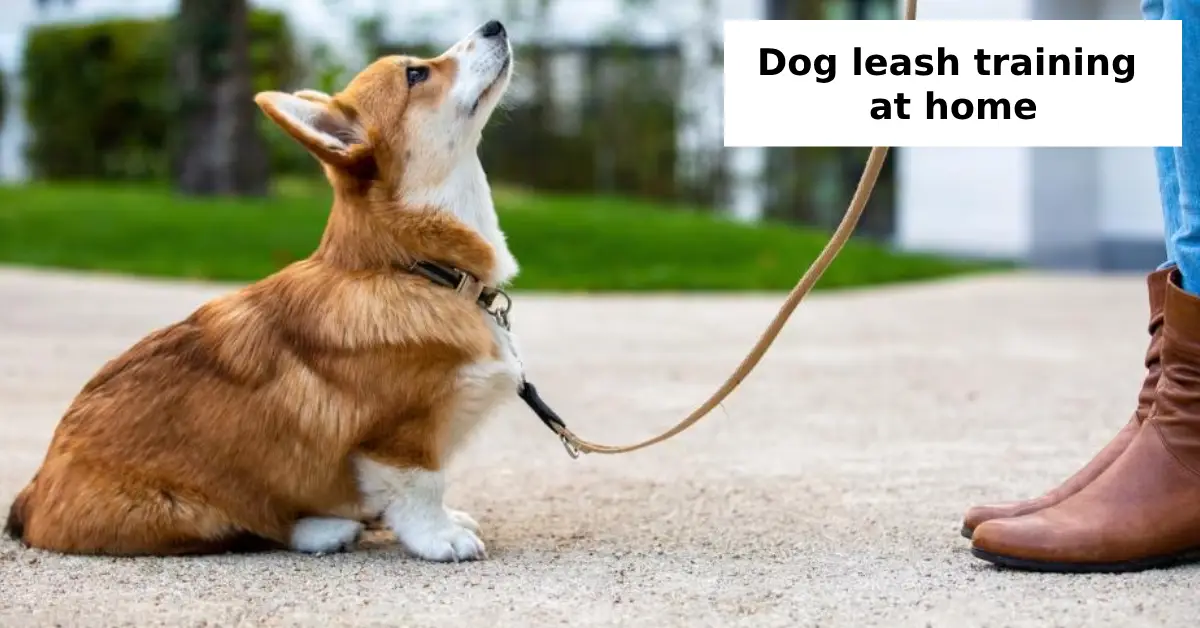Leash training is one of the most essential aspects of raising a well-behaved dog. Whether you’re a new dog or puppy owner, a first-time pet parent living in an apartment, or even a senior citizen with a new pet, mastering dog leash training at home can make your daily walks enjoyable and stress-free.
In this guide, we’ll walk you through a complete, expert-approved DIY dog leash training guide using positive reinforcement and proven techniques. Whether you’re working with a playful puppy, a stubborn rescue dog, or an energetic adolescent, these steps will help you succeed.
Why Dog Leash Training at Home Matters
Training your dog to walk calmly on a leash builds trust, control, and communication between you and your pet. Dogs are naturally curious, and without leash manners, a simple walk can turn into a tug-of-war. Learning how to train a dog to walk on a leash without pulling not only ensures safety but also encourages polite behavior in public spaces.
Training at home offers a comfortable, distraction-free environment to introduce your dog to leash behavior before you venture outside.
Step 1: Start with the Right Equipment
Choosing the best dog leashes for training at home is the first step to success. Start with a:
- 6-foot standard leash (not retractable)
- Comfortable, well-fitting harness or collar
- Treat pouch for quick rewards
- High-value treats (like chicken or soft biscuits)
Avoid retractable leashes—they encourage pulling and reduce control.
For dog trainers and pet behaviorists, we recommend starting leash training indoors or in a fenced backyard to eliminate outdoor distractions.
Step 2: Familiarize Your Dog with the Leash
Begin by letting your dog sniff and inspect the leash and harness. Gently put it on and let them walk around the house without holding the leash. This helps puppy leash training schedule and adult dogs alike by building familiarity.
Reward calm behavior with praise or a treat. This part of dog leash training at home focuses on creating a positive association with the gear.
💡 Tip for rescue dog adopters adjusting dogs to leash life: Keep initial sessions short (5–10 minutes) and stress-free.
Step 3: Teach “Come” and “Stay” Indoors First
Before leash walking, reinforce basic commands like “come” and “stay.” These are vital for at-home dog obedience training and help establish communication.
- Hold a treat and call your dog to “come.”
- When they reach you, reward immediately.
- Add the command “stay” by asking them to pause and sit before another reward.
Consistent repetition builds trust and responsiveness.
Step 4: Introduce Leash Walking Indoors
Now that your dog is familiar with commands and the leash, it’s time to start walking. Indoors is perfect for practicing loose leash walking training.
- Hold the leash close (but not tight).
- Walk a few steps and reward your dog when they stay by your side.
- If they pull, stop walking and wait for them to return to you.
This teaches that pulling doesn’t get rewards or progress.
For families with children and a new pet, encourage everyone in the household to use the same cues for consistency.
Step 5: Add Gentle Direction Control
If your dog tends to pull or wander, use gentle leash corrections:
- Stop walking when they pull.
- Call them back to you.
- Use a verbal cue like “Easy” or “With me” as a guide.
Use positive reinforcement leash training by rewarding the moment your dog returns to your side.
For leash training tips for stubborn dogs, you may want to practice in a low-distraction area like your hallway, garage, or fenced yard.
Step 6: Transition to Your Yard or Driveway
Once your dog is consistent indoors, move to slightly more distracting areas like your yard or driveway. Use the same principles:
- Keep sessions short (10–15 minutes)
- Reward good behavior
- Be patient and consistent
For home-based dog caregivers and pet sitters, this is a great stage to reinforce learned behaviors before taking pets to parks or walks.
Step 7: Practice in Public with Caution
When you feel confident, begin leash training in public. Stick to quiet streets or low-traffic parks. Avoid busy sidewalks initially.
Use treats, praise, and dog walking training techniques like turning around when your dog pulls. This teaches them that pulling leads to less fun.
For pet bloggers and influencers promoting training hacks, documenting this stage shows progress and real-life application of techniques.
Common Mistakes to Avoid in Dog Leash Training at Home
- Inconsistency: Everyone must use the same commands and expectations.
- Yanking or punishment: This breaks trust. Use gentle redirection instead.
- Long, overwhelming walks too early: Start small and build up.
- Not rewarding good behavior: Dogs repeat what gets rewarded.
Puppy Leash Training Schedule
| Week | Focus | Duration |
|---|---|---|
| 1 | Leash introduction | 5–10 min |
| 2 | Indoor walking | 10–15 min |
| 3 | Yard/Driveway practice | 10–15 min |
| 4 | Short neighborhood walks | 15–20 min |
Stick to short, frequent sessions to build your dog’s confidence. Just like crate training for puppies, leash training requires patience and positive repetition.
Progress Tracking and Motivation
- Keep a leash training journal
- Celebrate small wins (like staying calm at the front door)
- Adjust techniques based on your dog’s personality
For veterinarians or vet techs giving leash advice, offering printed training charts or progress checklists can empower pet owners to stay consistent.
Bonus Tips for Long-Term Success
- Stay Calm: Dogs mirror your energy. Stay relaxed.
- Use Voice Praise: Not just treats—use “Good boy!” and petting.
- Add Obstacles: Walk over low steps or cones for mental stimulation.
- Switch Routes: Change up the environment to avoid boredom.
- Use Verbal Markers: Try “yes!” or clickers to mark good behavior instantly.
For first-time pet parents in suburbs, mastering basic leash etiquette helps prevent behavioral issues down the line.
Recommended Gear for Home Leash Training
- Front-clip harnesses for pullers
- Short training leashes (4–6 feet)
- Treat bags
- Clicker for marking behaviors
- Long lines for distance recall
These tools make it easier to apply dog leash manners training and build reliable habits.
Final Thoughts:
Dog leash training at home doesn’t happen overnight—but with patience, consistency, and a positive approach, any dog can become a joy to walk.
From rescue dogs adjusting to leash life to senior citizens with new pets, this step-by-step method works for everyone. Focus on small wins, stay consistent, and make every walk a bonding experience.






1 thought on “Step-by-Step Guide to Dog Leash Training at Home”